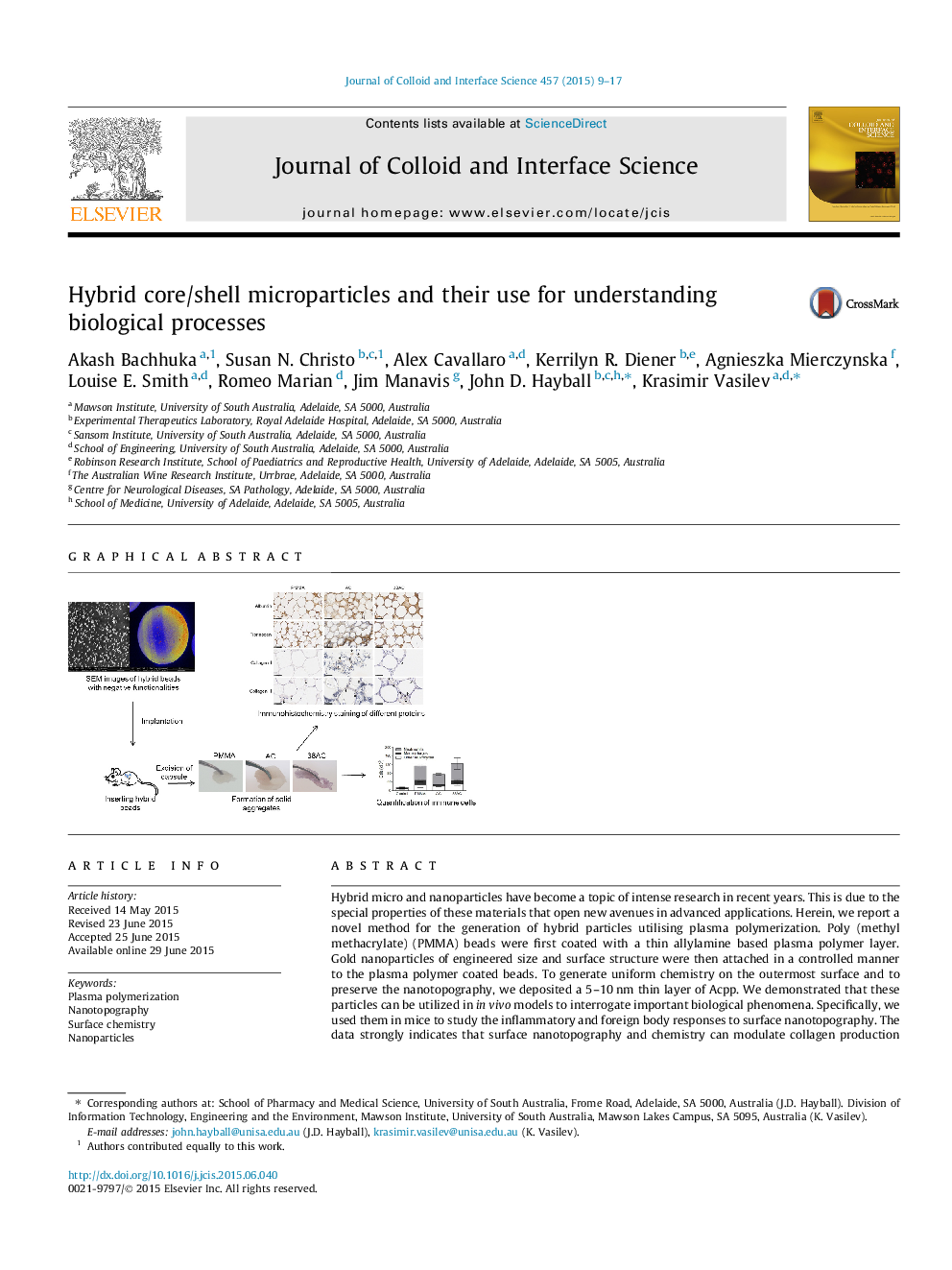| Article ID | Journal | Published Year | Pages | File Type |
|---|---|---|---|---|
| 606672 | Journal of Colloid and Interface Science | 2015 | 9 Pages |
Hybrid micro and nanoparticles have become a topic of intense research in recent years. This is due to the special properties of these materials that open new avenues in advanced applications. Herein, we report a novel method for the generation of hybrid particles utilising plasma polymerization. Poly (methyl methacrylate) (PMMA) beads were first coated with a thin allylamine based plasma polymer layer. Gold nanoparticles of engineered size and surface structure were then attached in a controlled manner to the plasma polymer coated beads. To generate uniform chemistry on the outermost surface and to preserve the nanotopography, we deposited a 5–10 nm thin layer of Acpp. We demonstrated that these particles can be utilized in in vivo models to interrogate important biological phenomena. Specifically, we used them in mice to study the inflammatory and foreign body responses to surface nanotopography. The data strongly indicates that surface nanotopography and chemistry can modulate collagen production and the number of adhering immune cells. The method for generating hybrid particles reported here is solvent free and can open new opportunities in fields such as tissue engineering, drug delivery, biosensors, and regenerative medicine.
Graphical abstractFigure optionsDownload full-size imageDownload high-quality image (202 K)Download as PowerPoint slide
